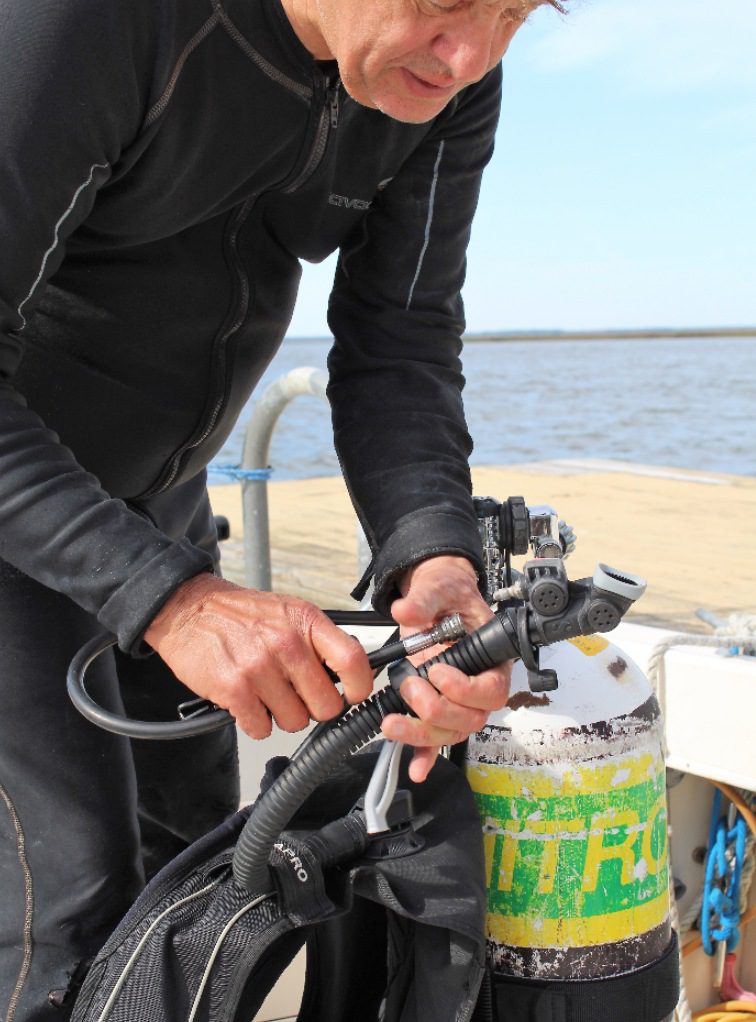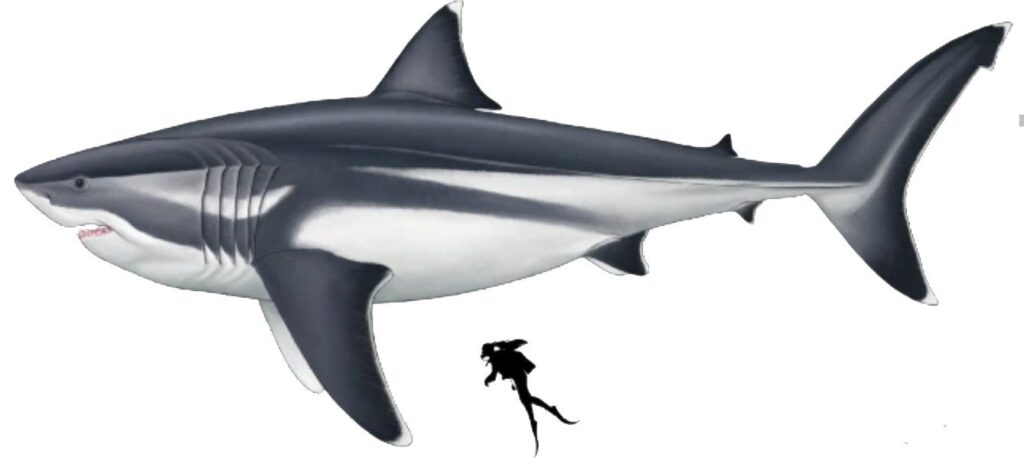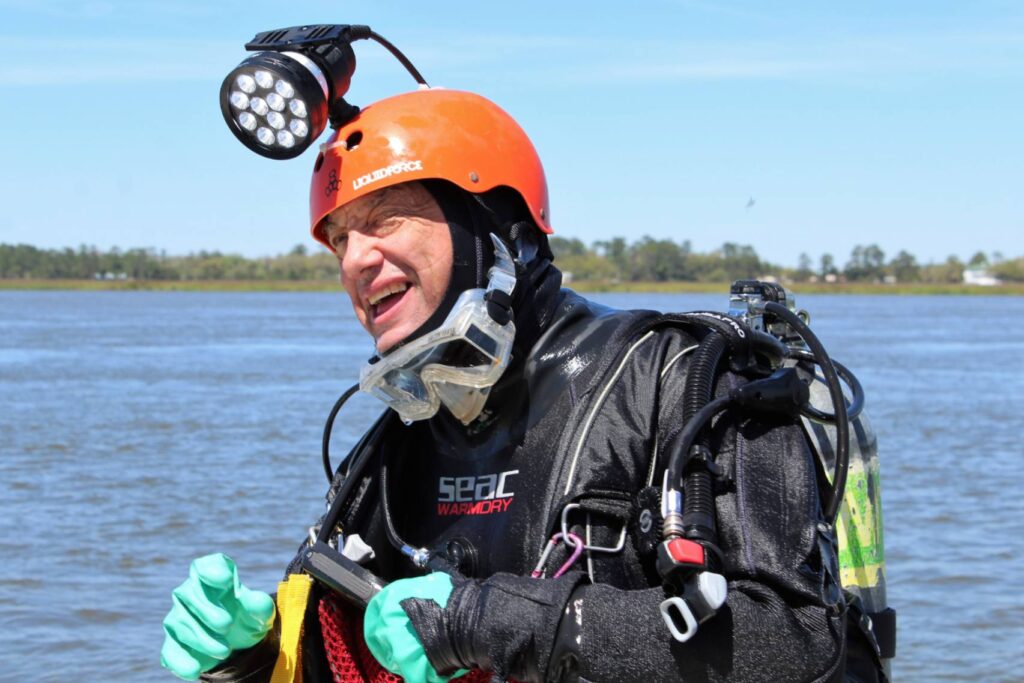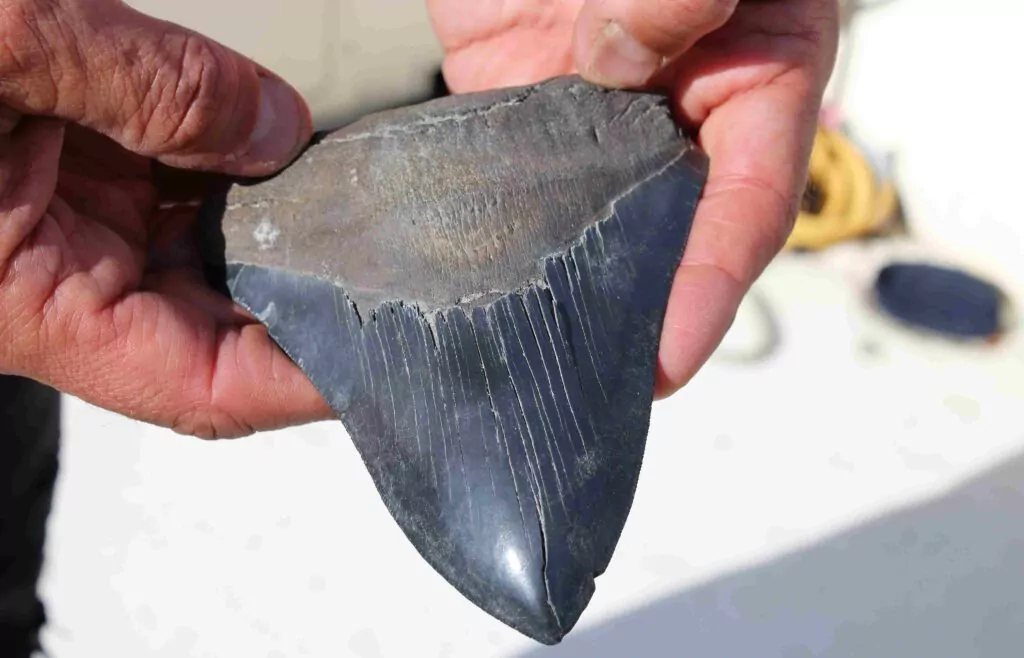Otodus megalodon, aka “Big Tooth”, hasn’t been around for more than 3.5 million years, whatever Discovery Channel might have us believe. The giant shark was probably killed off by then-cooling Planet Earth, falling sea-levels and competition from massive whales. But the species is thought to have survived for 20 million years up to its extinction, so it must have been doing something right.
Also read: Meg 2: The truth about the extinct mega shark
The megalodon was one of the biggest, most powerful predators that ever lived on our world, though we can’t be sure exactly what it looked like because all that remains to us today are its fossilised teeth.
The extinct creature is usually portrayed as a gigantic version of a great white, though some scientists think it might have more closely resembled a whale shark or basking shark. It could grow as long as 16m and weigh well over 50 tonnes, and its teeth were hefty crunching tools with a mega-bite force of more than 180,000 newtons. To understand such brute force you’d have to ask one of the whales, seals or turtles on which Big Tooth preyed.
For scuba diver Bill Eberlein, megalodons live on – and provide him with a good living. He completes some 300 dives every year, hunting the rivers and coastal waterways around Savannah, Georgia for those teeth. Mako shark teeth and other prehistoric relics supplement those finds.
It isn’t easy: “I have had a few scares. It can be very dangerous with the strong currents and terrible visibility,” he says. Low vis can lead to hazards such as kneeling on sting rays, and the mud can adversely affect dive-gear.

“The current once floated me out to sea for a few hours – I do not want to repeat that,” says Eberlein. “I have been bumped by several large creatures that I couldn’t see, due to the zero visibility. Once something grabbed my fins and spun me around. There are sharks and alligators in our region.
“Also, I’ll encounter discarded nets from what I think must be boats used for catching shrimp. It can be scary – but I’m still here!”
And it could have been worse, for a diver who has now spent several decades delving around under water in less-than-ideal conditions. But Eberlein wouldn’t change a thing: “The thrill of the discovery is fresh for me each time I locate a tooth – to me, it’s finding sunken treasure,” he says.
Dive into prehistory
Megalodons liked warm, muddy waters, and the part of the world that is currently the state of Georgia would have suited it just fine millions of years ago, says Eberlein.
He comes from further north, in Pennsylvania, where he got hooked on scuba diving 30 years ago. It was all about Great Lakes wreck-diving then, and he would also volunteer as a search and rescue diver in the Erie area, and teach classes as a NAUI scuba instructor.
Then, in 1999, he moved to the Atlantic coast in Savannah, Georgia to work as a computer-programmer for aircraft company Gulfstream. A work colleague introduced him to what they call “blackwater diving” in the local waterways, and he took to it quickly.
His first dive into prehistory was on a charter-boat at sea off Hilton Head island in neighbouring South Carolina, and after that experience his focus shifted.

“In 2001 my hobby became Megateeth Fossils, with a business licence motivated by my need to finance and justify my new shark-tooth dive-boat,” says Eberlein. The decision proved both fruitful and enjoyable, and seven years later he left Gulfstream to start teaching computer studies and accounting part-time at Savannah Technical College, leaving him more time to devote to fossil-hunting as a profession and “a way of life”.
He dives solo, though not without the cover provided by ex-Navy chief Josh, the captain of his 7.5m Parker 2520 boat. If Josh is not available, Eberlein’s wife Dodie, a diver who “prefers clear water to the muddy rivers here” or one of two other charter captains takes the helm.
“I always have to remember to make all the important safety checks, however keen I am to get ‘into my zone’ when I‘m diving and focused on finding the next big tooth, when nothing else seems important,” says Eberlein. “If I run out of air or get lost down there once, I won’t get a second chance.”

The choice Savannah sites can take the boat along rivers anywhere from one to 10 miles from the slipway. “Also, I do go to Wilmington in North Carolina a few times a year to dive for teeth, so that’s a five-hour drive.” Some 20 years ago divers discovered a series of ledges 40 miles out into the Atlantic from Wilmington, and since then the majority of prehistoric shark teeth found and sold have come from this area, says Eberlein.
Of his home territory he says: “All the spots I dive, I found myself. I have done hundreds of dives in all my favourite spots, so I know where to go. It takes a while to figure out each area – it’s hard, because you can miss the spot by a couple of yards and not find anything.” Usually his boat is out in isolation, and only occasionally will another boat-load of divers be exploring nearby.
One in ten
Most of Eberlein’s dives are in the 9-24m range, and only trial and error will determine whether a new site will be productive. “In the rivers depth plays a part in what is exposed at any time. I can dive ten spots that look identical from the surface, but only one might contain exposed fossils.
“Over the years I’ve gone diving for shark teeth in over 200 spots near Savannah in about 20 different rivers, though I only found enough teeth in about ten spots to go back to on a regular basis.” He reckons he spends some 90% of his time at those better sites – and 75% at five of them, though he will return to less-productive spots or try new ones from time to time

“The currents from strong tides move sediment around, so these places change all the time and expose new and cover old fossil-beds,” says Eberlein, which is why he is confident that as long as the demand is there, there is little danger of the supply of shark teeth dwindling.
“It is far more than divers will find in our lifetimes,” he says, and cites those productive ledges off North Carolina: “Who knows what other ledges or beds are out there, even larger than those, to be found?”
Each of those megalodons had a lot of teeth, too – five rows measuring up to 15cm long, 276 teeth in all. And sharks lose many teeth and grow new ones throughout their lives.
Apart from the risks, the underwater search process is far from straightforward. “The teeth will settle to the hard bottom and may be covered by sand or mud. The hard bottom is sometimes exposed, so the teeth are exposed, but they can also be between 1in and several feet below the mud, depending on how much is covering the hard bottom. If I have to dig more than a few inches, I just move on.

“Lights help a lot if you have even a few inches of visibility. I use an OrcaTorch D630, a bright, durable light with a lot of burntime.” His light is helmet-mounted, and beyond standard scuba gear he takes only a reel and SMB “in case of being carried off by the current”, knives and shears.
“I usually do two one-hour dives, and find on average two or three whole teeth a dive. They can be small or large, perfect or chipped.”
Other finds
Around Savannah, Eberlein knows he is unlikely to be distracted by finding man-made artefacts on river-beds. The most common finds are in fact prehistoric whale fossils, though Eberlein says that “most are bones that have been broken from the currents and are unidentifiable”.
He also comes across the remains of prehistoric land animals such as mammoth teeth, vertebrae and tusks, and has even found the jaw of the mammoth’s distant relative the mastodon.

Once found, Eberlein has to clean and grade the ancient dentition. “The teeth I find are generally in very good condition because there is a lot of clay in the mud, which preserves the serrations. In some areas with a lot of gravel and sand the teeth become badly eroded over the three million or more years they remain hidden.”
The teeth take on the colour of surrounding minerals, and in the Savannah area that gives them a rich black and grey hue, in contrast to those found in the once-submerged deserts of Peru and Chile, which are reddish. They typically weigh around half a kilogram and are 7-12cm long.

Size and condition determines the price of a megalodon tooth, and they can sell for anything between $40 and several hundred dollars each. “I have sold a few for several thousand dollars – but those are one-in-a-thousand dive teeth at best!” says Eberlein.
Buying megalodon teeth

Most of Megateeth’s sales are of fossils recovered by Bill Eberlein himself. “Sometimes I will sell a tooth found by a friend but I prefer to sell fossils that I personally found to guarantee the authenticity, condition and source,” he says. His “museum-quality” megalodon teeth, complete with certificate of authenticity, are shipped to collectors across the USA and internationally, with much interest coming from Europe and South Africa.
“There are a significant number of high-end collectors who want only the biggest and best fossils available and some people have beautiful and impressive displays of magnificent polished shark teeth,” says Eberlein.
“Young people in particular are fascinated with prehistoric dinosaurs and sharks and love to own something that was in a giant megalodon shark’s mouth. I expected parents to buy shark teeth as a cool gift for their kids, but what I did not expect was whole families to become interested in collecting them.
“I guess they feel the same fascination as I do when they touch and hold something so ancient – a link between us and the dinosaur age.” Find out more on the Megateeth site.
Also on Divernet: The Real Meg – 16m Of Power, Strange Shark & An Epoch-Spanning Graveyard, Shark Activist Survives Gator Headbite


Awesome article. Thanks a lot.for writing it.